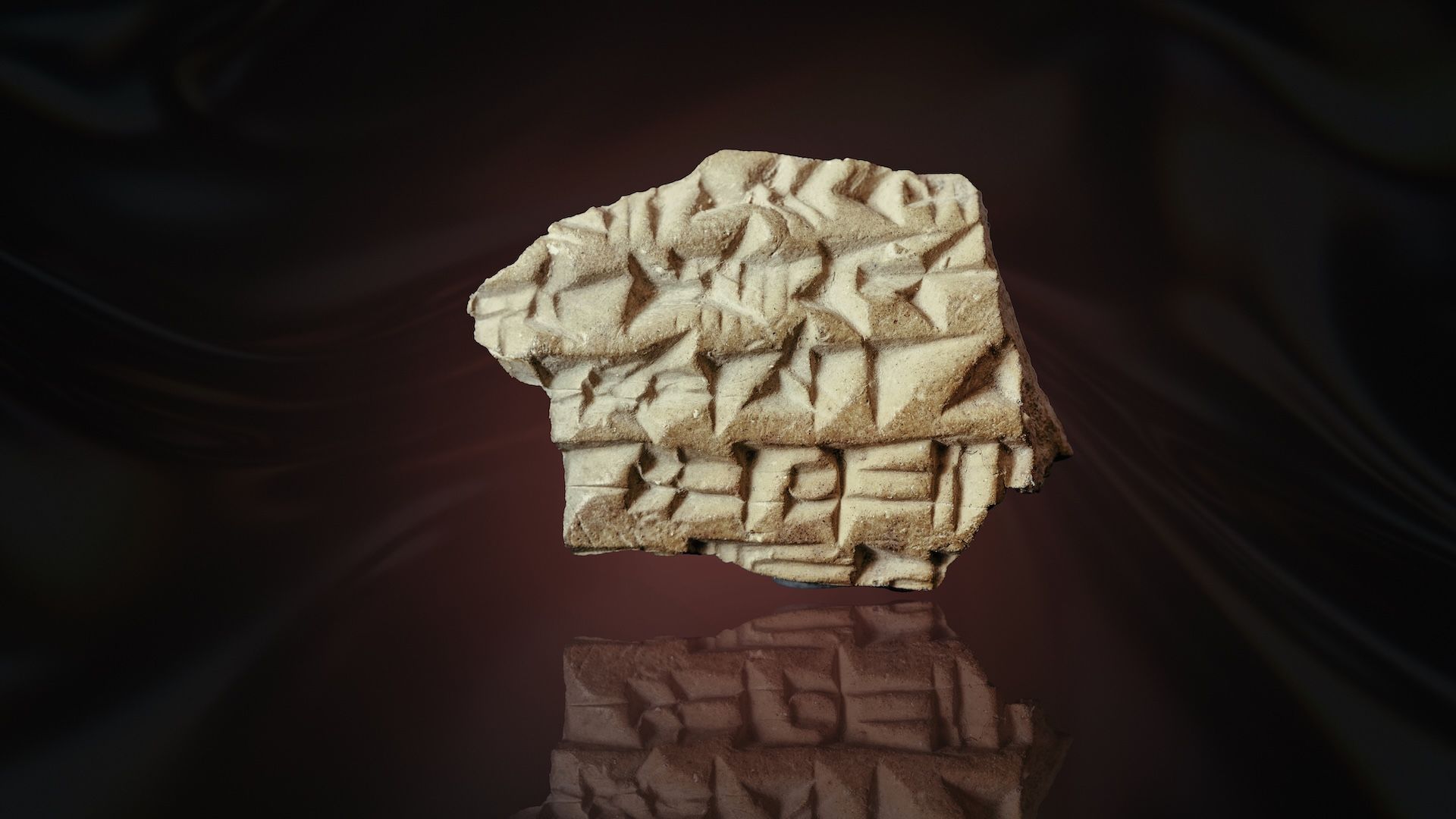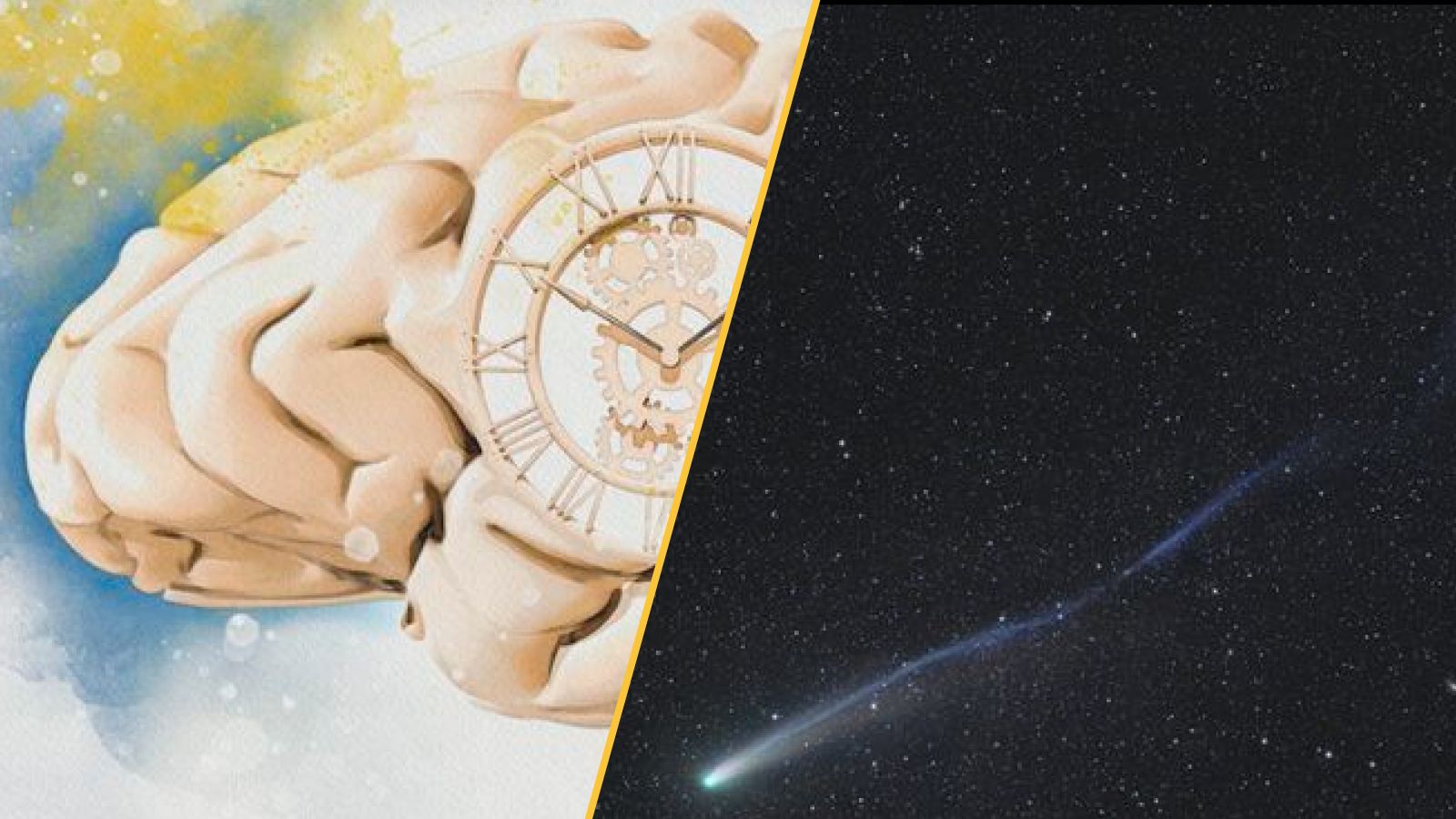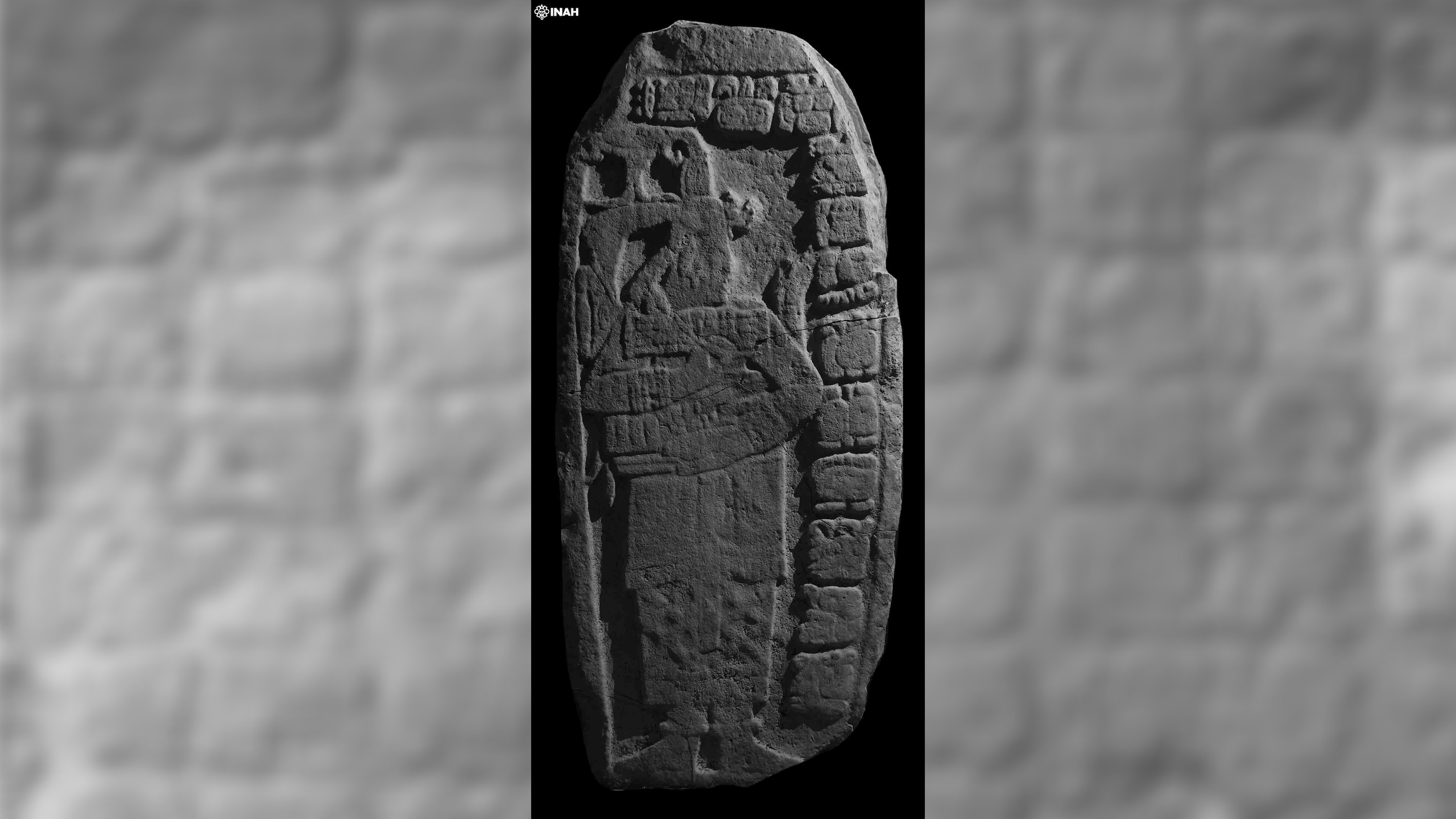A 2,700-year-old pottery sherd discovered near the Temple Mount in Jerusalem is the first known correspondence between the Assyrian Kingdom to the Kingdom of Judah ever found in the city.
The 1-inch-long (2.5 centimeters) sherd (the term archaeologists use to describe fragments of pottery) is covered with cuneiform text and dates to the First Temple period (1000 to 586 B.C.). It appears to contain a royal correspondence from the Assyrian Kingdom to the Kingdom of Judah demanding to know the status of a late tribute payment.
“The inscription provides direct evidence of official correspondence between the Assyrian Empire and the Kingdom of Judah,” Ayala Zilberstein, the excavation director on behalf of the IAA, said in a statement. “The discovery strengthens our understanding of the depth of the Assyrian presence in Jerusalem, and the extent of its influence on and involvement in the conduct of the affairs of the Judean kingdom.”
The sherd was found during an excavation near the Western Wall of the Temple Mount, according to the statement. Researchers found it while “wet sifting” fragments unearthed at Emek Tzurim National Park.
“I was sifting through the dirt and suddenly noticed a sherd with a strange decoration,” Moriah Cohen, who works at the “Archaeological Experience” in Emek Tzurim, an attraction that allows visitors to help sift for artifacts, said in the statement. Cohen added that “after decidedly determining that this was no decoration, but really was cuneiform, I screamed out of excitement.”
The sherd was found in dirt along the edge of Jerusalem’s central drainage canal, which dates to the Second Temple period (516 B.C. to A.D. 70), she added. But the fact that the sherd was found there suggests that this area “served as a focus for the activities of high-ranking ministers and persons” during the First Temple period, Zilberstein said.
It’s likely that this sherd was actually part of an inscribed royal sealing, or an impression meant to seal an official letter, from the Assyrian court, Assyriologists Peter Zilberg, of Bar-Ilan University, and Filip Vukosavović, of the IAA, wrote in a joint statement.
“Bullae or sealings of this type bore an impression that was sometimes accompanied by a short inscription in Assyrian cuneiform script noting the dispatch’s contents or its destination,” they said.
This idea supports the hypothesis that the correspondence was a royal one about a delayed payment. The text mentions a deadline — the first of Av, a summer month in the Jewish and Mesopotamian calendar. It also mentions a chariot officer, a position known from Assyrian records, who would have conveyed the royal message.
Although the message does not name the king of Judah, it was likely addressed to the court of the kings Hezekiah, Manasseh or Josiah, the latter of whom ruled over the Kingdom of Judah when it was a vassal kingdom of Assyria, according to the statement.
It’s also unclear why the payment was delayed.
“While we cannot determine the background for this demand, whether it stemmed from a mere technical delay or was taken as a deliberate step with political significance, the very existence of such an official appeal would seemingly attest to a certain point of friction between Judah and the imperial government,” Zilberg and Vukosavović said.
An analysis of the sherd’s material suggests that it was not made locally in Jerusalem. Anat Cohen-Weinberger, a petrographic researcher at the IAA, said in the statement. Rather, its mineral composition corresponds with cities within the Assyrian Kingdom, such as Nineveh.
“A chemical analysis of the bulla’s composition is currently being conducted” to more precisely locate its origin, Cohen-Weinberger added.
The sherd may be tiny, but the finding is a significant one, Zilberg and Vukosavović said.
“The find opens a window into understanding the political and administrative ties between Judah and Assyria,” Zilberg and Vukosavović explained. “It is the very first evidence of its kind of the official, and perhaps even tense, communication that took place between Jerusalem and the world’s most powerful superpower during the period we are discussing.”














